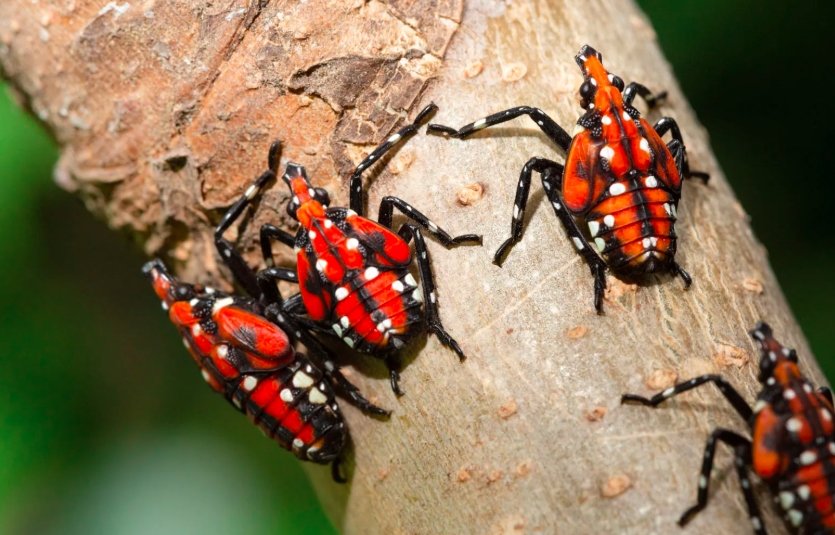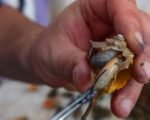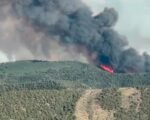As spring brings fresh bloom across northeast Indiana, state officials are sounding the alarm over a not-so-welcome seasonal return: the spotted lanternfly.
An invasive species with a deceptive beauty, the spotted lanternfly has emerged as a growing threat across several states — and Indiana is no exception.
Now, with temperatures warming and tree sap flowing freely, entomologists say it’s only a matter of time before the pest reappears in force.
“We’re urging the public to stay alert,” said Vince Burkle, Assistant Director of the Indiana Department of Natural Resources’ (DNR) Division of Entomology & Plant Pathology. “The spotted lanternfly can be devastating to trees, vineyards, and crops. The earlier it’s spotted, the better chance we have to contain it.”
A Pest With a Colorful Face and a Destructive Appetite
Native to Asia, the spotted lanternfly was first detected in the U.S. in 2014 — and it’s been steadily advancing westward ever since.
The bug might look harmless at a glance, even stunning. Adult lanternflies sport grey wings dotted with black spots, and when in flight, they reveal striking red and black underwings that make them look more like exotic butterflies than destructive pests.
But make no mistake — they’re voracious feeders.
Their primary targets include:
-
Grapevines
-
Maple, walnut, and sycamore trees
-
Orchard crops
-
Hops and hardwoods
They don’t chew or bite; instead, they pierce the bark of trees and plants and suck out the sap, weakening their hosts and leaving behind a sugary excrement called honeydew that encourages the growth of black, sooty mold.
The damage isn’t just cosmetic — it can lead to crop loss, tree death, and millions in economic harm.

The Four Stages of Trouble
Spotted lanternflies go through four life stages, and early detection depends on knowing what to look for:
-
Egg Masses (Fall to Spring):
These are laid on tree bark, rocks, outdoor equipment — anywhere sheltered — and look like smears of gray putty. -
Early Nymphs (Spring):
Tiny black bugs with white spots, roughly the size of a tick. Easy to miss. This is where most go undetected. -
Late Nymphs (Early Summer):
Bigger and brighter — now red with black and white patterns — and starting to hop. -
Adults (Late Summer to Fall):
Fully winged, about an inch long, and highly mobile. This is when most people finally take notice.
“By the time they’re adults, the damage is already underway,” said Burkle. “That’s why we really need the public to help us detect the early nymphs and egg masses.”
Where Are They in Indiana Now?
The lanternflies have been creeping through northeastern counties for several years now, with documented sightings in Allen, Steuben, and DeKalb counties, among others.
They’ve already made a solid foothold in neighboring Ohio and Pennsylvania, which have seen heavy infestations — especially in vineyard-rich areas.
The Indiana DNR has set up a statewide reporting tool to track the pest’s presence and guide containment efforts.
“We update the map regularly,” Burkle said. “If someone reports a sighting, our inspectors can respond quickly — sometimes within a day.”
How You Can Help: Spot, Snap, Send
Public involvement is crucial, and the DNR has laid out a simple three-step method for Hoosiers:
-
Spot it: Know what you’re looking for — whether it’s eggs, nymphs, or adults.
-
Snap a photo: Clear, close-up pictures help experts verify the species.
-
Send it in: Report sightings through the DNR reporting tool
or contact the local extension office.
Here’s what you should NOT do:
-
Don’t move firewood, brush, or tree material from infested areas.
-
Don’t attempt chemical treatments unless advised.
-
Don’t ignore early-stage sightings just because the insect looks small or “pretty.”
The Broader Impact: Agriculture at Risk
Indiana’s agricultural economy — worth billions annually — is especially vulnerable.
Grape growers, hardwood producers, and maple syrup farms could suffer dramatically if infestations spread unchecked.
A 2023 estimate from Penn State University placed Pennsylvania’s annual economic losses at over $50 million from lanternfly damage — a figure that could easily play out in Indiana without early action.
“These bugs don’t fly long distances, but they hitchhike,” Burkle explained. “Egg masses on trucks, campers, firewood — that’s how they move.”
What to Watch For in the Coming Weeks
As we move deeper into spring, Burkle says Hoosiers should begin checking for early nymphs on:
-
Tree trunks, especially Tree-of-Heaven (a preferred host)
-
Garden plants
-
Fence posts and decks
-
Outdoor equipment and vehicles
Expect the first major sightings by late April to early May, especially after a stretch of warm days.
Egg masses will begin to hatch, and early nymphs will emerge — silent, small, and easy to miss unless you’re looking closely.
A Problem That Could Get Worse Before It Gets Better
Despite active containment zones and ongoing monitoring, Burkle says complete eradication is unlikely at this stage.
“But that doesn’t mean we give up,” he added. “We can slow the spread. We can protect our crops. And with help from vigilant citizens, we can still make a big difference.”













